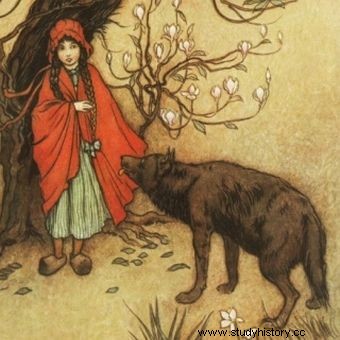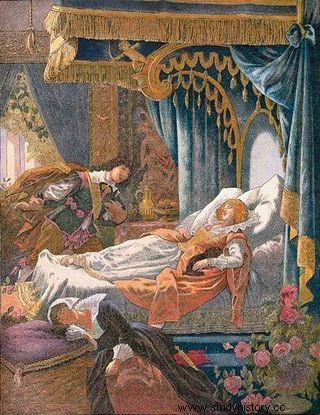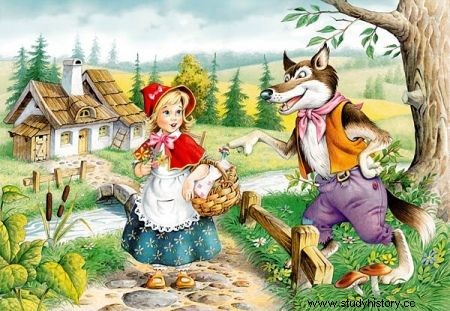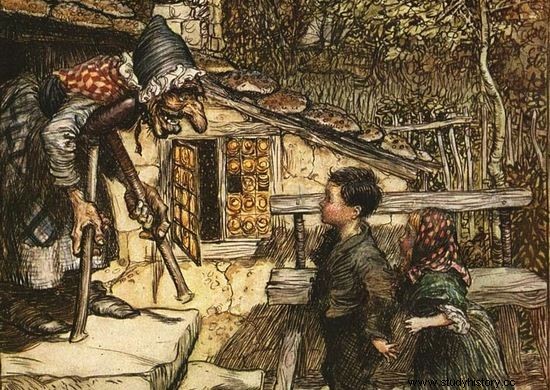The idyllic stories about Hansel and Gretel, Tomek Paluch or Little Red Riding Hood do not resemble their prototypes in any way:fairy tales told in peasant huts in France, Germany and England several hundred years ago. Then, in the stories, blood poured in streams, and the corpse was littered thickly ...
Primary versions of folk tales have been analyzed by cultural anthropologists and historians for several decades. The achievements of their work were compiled by Robert Darnton in the book "Wielka masakra kotów" recently published in Poland. It makes people shiver from this reading.
It turns out that "Sleeping Beauty" is in fact a story of rape and a relationship with her mother-in-law . Darnton explains: In an early version of the fairy tale, a prince who is already married to another one owns a sleeping beauty, who bore him several children before waking up . It was only these infants, biting the mother in the breast, that led to her awakening. 
There is no question of any kiss! Later, the story takes a completely unexpected turn. The new mother-in-law of the prince, incidentally a cannibal giant, attempts to eat her daughter's extramarital children.
The earliest version of the red cap fairy tale known to scientists is also surprising. There is neither a hood nor a gamekeeper in it, but there are a few new threads. Let's skip the very beginning, which is slightly different from the modern version, and let's go straight to the point:
The wolf took the second path and was the first to reach grandma's house. He killed her, poured her blood into a bottle, and placed the sliced pieces of her body on a platter. Then he changed into his grandmother's nightgown, lay down in bed and waited.
After a while, of course, comes the girl we know as the little red riding hood. A wolf dressed as a grandmother greets her warmly and encourages her to drink wine and try slices of meat lying in the pantry.

It turns out that the Sleeping Beauty is actually a story of rape and a relationship with her mother-in-law.
The girl happily agrees and eats her grandma's meat while washing her thigh with blood . This is not the end. Then follows the absurd scene of ... striptease:
- Then the wolf said:Undress and lie down with me.
- Where should I put my apron?

Red Riding Hood. It wasn't quite like that…
- Put it on the fire, you won't need it anymore.
Taking off her clothes - corset, skirt, petticoat and stockings - the girl asked the same question, and the wolf replied:- put it on the fire, you won't be any more needed.
Eventually, the heroine goes to bed and the wolf devours her. Nobody saves her. The fairy tale ends.
Let's take the story about Hansel and Gretel as a wallpaper. In the French folk version of this story, Johnny tricked the giant - replacing the well-known Baba Yaga - to cut the throats of his own children. Many peculiar variants have the Cinderella fairy tale.

The French version of the fairy tale about Hansel and Gretel has little to do with what we remember from childhood.
In one of them, the protagonist becomes a servant after fleeing from her own father, who wanted to marry her and vent incestuous desires . In another version:
Evil stepmother tries to push Cinderella into the stove, but by mistake kills her own daughter on fire (...) Husband devours new newly wed wives in "Beauty and the Beast" (...) . In the more drastic story of "Three Dogs" a sister kills her brother with skewers hidden in the mattress his wedding bed.
In the bloodiest - "My mother killed me and my father ate me" - the mother cuts up her son's body and makes a stew of it in Lyonian style, which the daughter gives to her father.
In the 18th century, there was also a story about a girl who, just before getting married, discovers that her fiancé is a serial killer, and keeps the skins of her former partners in the attic. Well, we still have such stories today. It's just that they are told in crime drama series for adults, not in bedtime stories.
Source:
Trivia is the essence of our website. Short materials devoted to interesting anecdotes, surprising details from the past, strange news from the old press. Reading that will take you no more than 3 minutes, based on single sources. This particular material is based on:
- Robert Darnton, The Great Cat Massacre and Other Episodes in French Cultural History, Polish Scientific Publishers PWN, 2012.
